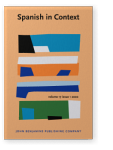Vol. 17:1 (2020) ► pp.58–83
Are the systems the same?
Applying the comparative method to variable intensification in the Spanish and Catalan of Tarragona, Spain
Although two languages in contact may contain similar structures, superficial structural similarities may abscond important differences. The comparative method critically determines whether the languages differ in relative rates of variant use, the significance of independent variables, constraint rankings, and ordering within factor groups (Poplack & Tagliamonte 2001). The study explored intensifier (i.e., degree modifier) variation between Spanish muy and bien and Catalan molt and ben “very”, as based on 84 sets of responses from bilinguals on a 24-item contextualized preference task (40 in Catalan, 44 in Spanish). Results indicated significantly higher selection of muy in Spanish than molt in Catalan. Moreover, independent variables played a greater role in Spanish, with adjective quality, animacy, and verb type all predicting intensifier selection, whereas in Catalan only adjective quality was predictive. The study provided the first variationist analysis of Catalan intensification, while also revealing key systemic differences between the two languages despite surface similarities.
Article outline
- 1.Introduction
- 2.Background
- 2.1Cross-linguistic influence, the comparative method, and functional equivalence
- 2.2Intensification in Spanish and Catalan
- 3.Previous research
- 3.1Empirical research on intensification in Spanish and Catalan
- 4.Method
- 4.1Current study
- 4.2Participants
- 4.3Tasks
- 5.Results
- 5.1Overall rates of selection
- 5.2Mixed-effects regression models
- 6.Discussion
- 7.Limitations, future directions, and conclusions
- Notes
-
References
